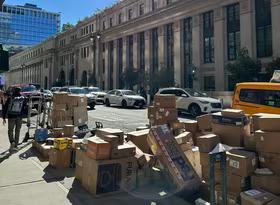This opinion piece was first published on Stuff on 28 November 2023.
Black Friday has quickly morphed in recent years from just another incursion of American culture to one of the biggest retail events of the year, even surpassing the Boxing Day sales. Although the sales by New Zealand retailers mostly seem to lack the fabled offers that almost cause stampedes in US malls, they still offer an opportunity for organised and savvy shoppers to get their Christmas shopping done for less.
This year the sales have seemed to have started earlier, lasted longer, and offered bigger discounts than we’ve seen in previous years. Disruptions to supply chains and international shipping during the pandemic meant that many retailers between 2020 and 2022 struggled to keep sufficient stock on hand to meet very strong demand. Those disruptions have largely been resolved over the last 15 months, at the same time as consumer spending has taken a turn for the worse. The need to shift stock and shore up cashflow is reflected in the greater level of discounting taking place at this year’s Black Friday sales.
Initial reports of Black Friday’s activity this year have been sluggish, continuing a weak 2023 for retailers. Retail sales data this year has been the weakest since the Global Financial Crisis in 2008/09, even if September quarter figures that were published last Friday were less negative than for previous quarters. But there has also been a development in this year’s data that provides an interesting insight into people’s spending behaviour.
During 2022, the value of retail sales rose by 5.9%, but the volume of sales fell by 3.8%. This gap of almost 10 percentage points meant that people were spending more money at the shops, but getting less bang for their buck as strong inflation eroded their purchasing power. Cost-of-living pressures from price rises for essentials such as food and fuel were effectively reducing the volume of other products that people were able to purchase.
The retail dynamic during 2023 has been very different. This year, although prices continue to rise making purchases more expensive, the value of sales has risen just 0.5% since the start of this year. At the same time, retail sales volumes have declined 2.2%. When we consider that population growth has accelerated to a record high of 2.7%pa, it becomes clear that people are now buying less than they were in 2022 and spending less money as well – even though prices have continued to rise.
The data points towards a clear effect of rising interest rates sucking money out of household budgets, leaving less money for spending elsewhere. Our long-held view has been that the interest rate effects are quite highly concentrated among new mortgage holders and people who took on large amounts of debt during 2020 and 2021. Although that premise remains solid, the squeeze is being felt on a more widespread basis as mortgage rates have pushed up to 14-year highs.
Electronic card data shows that, unsurprisingly, the biggest falls in spending are coming through in the more discretionary product types, including apparel, durables, and hospitality. Choosing to get another year or two out of that tired sofa or hanging onto your old jeans for a few more washes is an important way of getting by when money is tight.
From a retailer’s perspective, the concern must be that we are only about three quarters of the way through the interest rate rise’s effect on household budgets, as people continue to roll off lower fixed mortgages and onto higher rates. Even if mortgage rates start to drift down from their current highs, they are still likely to be above the rates that people have previously been paying until at least mid-2024.
In that context, the sluggishness of retail activity that remained evident in the Black Friday sales is set to persist throughout summer and beyond. The cost-of-living pressures on households mean that retailers will be under pressure to demonstrate and provide value to their customers, who are much more reluctant to part with their money than in the free-and-easy spending days during the pandemic.
Amid the gloom, there’s one silver lining: our discussions with businesses indicate they are a lot more reluctant to raise prices than they have been throughout the previous couple of years. With broader cost pressures easing, businesses are now concerned about the risks of losing market share as their customers become more price sensitive. This shift suggests the economy is returning to an inflationary environment akin to pre-pandemic norms, and that the trend of moderating inflation that has developed throughout 2023 will continue into next year and beyond.







